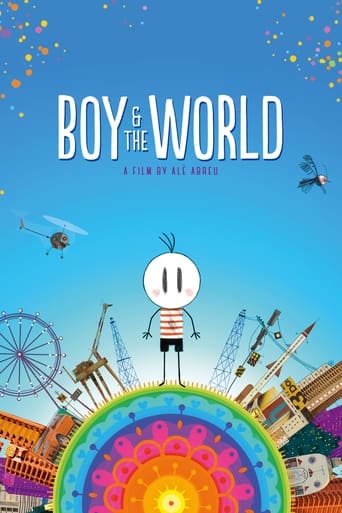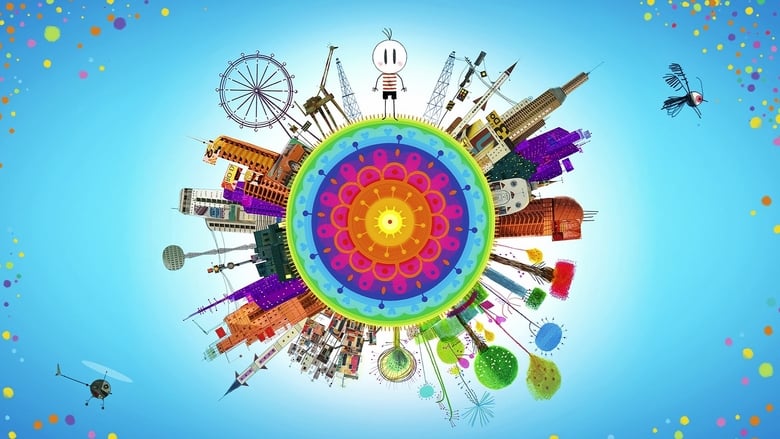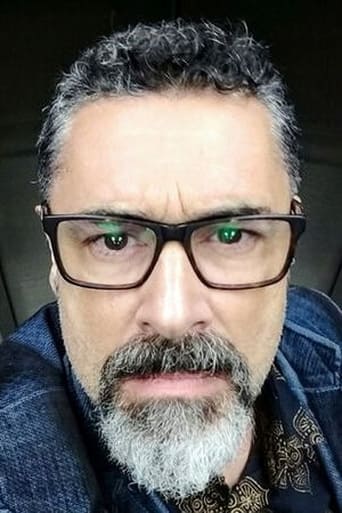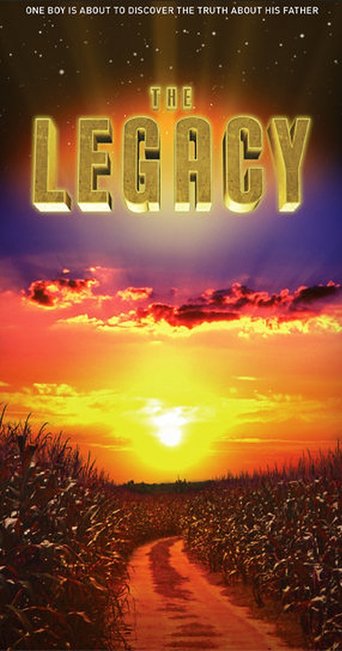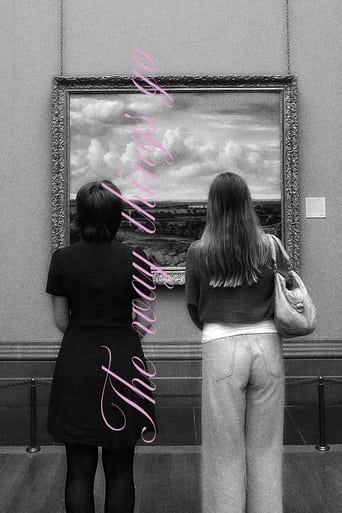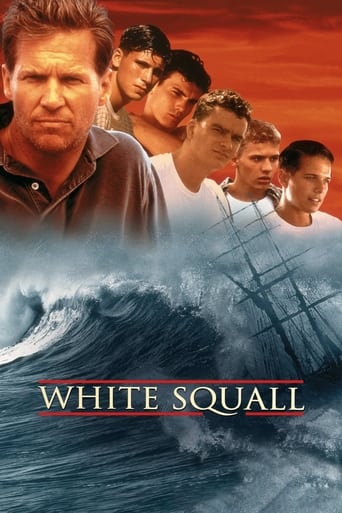Boy & the World (2015)
Suffering because of his father's departure to the big city, a boy leaves his village and discovers a fantastic world dominated by bug-engines and strange beings. An unusual animation with various artistic techniques that portrays the issues of the modern world through the eyes of a child.
Watch Trailer
Cast


Similar titles
Reviews
I love this movie so much
the audience applauded
Pretty good movie overall. First half was nothing special but it got better as it went along.
Exactly the movie you think it is, but not the movie you want it to be.
Don't let the colorful animation of Boy and the World to distract you from its deep obscure meaning. From the beginning, I thought this was going to be another animated movie for kids but boy was I wrong. Boy in the World is about a Brazilian boy whose life is destroyed. His dad leaves to go find work and the boy want to go find him but instead he finds a terrible world where he is lost. The boy is more of a symbol in the movie, he represents the people of Brazil and how they have suffered because of modernization and capitalism. We can see how the other characters of the movie lose their humanity when they become factory workers or film workers. They are nothing to their country but a source of money. They work all day and they live in terrible conditions. We see a contrast of color and sound in some scenes specifically the ones were the people were being oppressed which give it a darker connotation. But the most effective scenes where not the animation one but when they show small clips of the real world and how bad things really are. A break from the fantasy and a crash into reality.The movie is a critique of the world we live in and how some people are lost to this society. People are stripped of their lives and are forced to become nothing but and income to those in charge and those in charge clearly don't care about them. The fact that the boy's dad is never found shows just how lost people really get in this world sometimes. I found the movie to be extremely effective at getting its message across. I couldn't stop thinking about this movie for a week after I watched it, it will really make you consider and look with a critical eye what is going on in the world now days. We can let other people be stripped of their humanity there must be something we can do.
The film was nominated at the 88th American Academy Awards for best animated feature and lost to 'Inside Out', but won one at Annie Awards out of three nominees. Originally from Brasil, a 80 minutes long, I mean short film, excluding the opening and end credits which makes it even shorter. The tale was told with the beautiful visuals and music, without any dialogues to reach the audience making no complication. Because it was not just an entertainer, but a message bearer.The animation type was simple, yet awesome. All the drawings were done by the director himself. Totally colourful crayons sketches. It was supposed to be a documentary, but later became a feature film. The story about a boy who lives with his parents in the rural growing up loving all the wonders of the nature. He observes the changing world as his father bids a goodbye to him to look for a better job in the city, but never returned. So the curious little kid who loves his father very much takes us an adventure when industrial revolution taking place. The rest of the film tells whether he finds what he's looking for.There were many animations got released in the same year, but this film got the Oscars nod because of the strong message. Especially in the present world this kind of film brings more awareness to the people. It focused the theme man destroying the beautiful world for the profit and dumping the waste everywhere. I am sure you might have seen several documentary films on this topic, but this one was different which was somewhat close to 'Earth 2100'. Although it talks about the past and present than the distant future.The pollution was one of the biggest concerns today and nobody cares to curb it. The industrial revolution is not defining our progressive, but threatening to our future generation. Besides the poors are directly affected by the loss of the employment. The human development in on the right direction, but the path we have chosen was not. So by now you know it is not for just the kids. The film offers a lot for adults to learn from it than the children. But surely a film to them both watch together and have a good time.At one point, for a quick, a few real clips were shown to let us know what the real world looks like after such thing happened as it was shown in the film. I loved the comparison between the city and the rural, from lifestyle, fading culture to everything. The real heartbreaking scene is when the boy revisits his old place to learn it is destroyed. Surely we all have similar kind of experience in our life about the place we had admired some time ago is now completely ruined.It might have not won the Oscar or not popular as the one won, but definitely not ignorable film. All the other four nominees stood behind creativity and entertainment, but this one was with dual intention and it succeeded. It wins our heart more than any prestigious awards in the world, yet I agree the awards leads to the wider recognisation. So I urge everybody to watch it sooner or later, but never to miss it. It is not your Disney, Pixer or Ghibli films, but surely you would enjoy it. I don't know the director, but I think if he resumes with the same intensity for the future projects, he would definitely become the South American Tomm Moore with his unique animation and storytelling.8/10
The simplistic and almost childish animation style of this film still manages to convince an adult viewer to believe in the existence of and get involved in the world that it is depicting. How is this made possible? The world we see on the screen is given life by the colorful and creative use of sound and music. Despite the fact that the little amount of dialogue in the movie is unintelligible, it does not mean that it bears no significance. The utterances of reversed Portuguese can still be interpreted in combination with the images and what we know of the story. Interestingly enough, these pieces of dialogue were not recorded in normal order and then reversed. In that case it would not sound as natural as it does now. This approach to the lack of real dialogue is supported by an interview with the director Alê Abreu in the Brazilian magazine Revista da Cultura. In this interview he explains that The Boy and the World actually emerged from the idea of an animated documentary called Canto Latino about the formation of Latin America until the period of dictatorships. This documentary would use music, such as the songs of protest from the 1960s and '70s, to guide the story. Instead, Abreu was inspired to make an animated fiction film which still used the principle of music as a guiding force behind the story. However, another motivation for the original use of dialogue is that the film is following the boy's perspective which causes the dialogue and other linguistic utterances to be a scrambled mass of (familiar) sounds. The boy experiences the world as a child who does not yet understand the harsh reality which his parents are well aware of. The intention to show the movie and the world through the boy's eyes is explicitly brought to the attention of the audience through the title of one of the film's theme songs Aos olhos de uma criança (In the eyes of a child) sung by the rapper Emicida. The entire story is connected by one single leitmotif in the score which is first played as source music by the father and then repeated to remind the spectator of the boy's goal during his adventure. This song also connects sound to image and creates an organic unity between the two sides of the medium. Whenever someone plays the song, colored bubbles appear and float into the sky. This visualization of music supports the story by forming a metaphor for the battle between the civilians and the military. One of the characteristics of the soundtrack, which attracted me to the discussion of this particular film, is the mixture of sound effects and musical elements. Some clear examples of this mixture of sound effects and music are the sounds of various animals, such as chickens, a butterfly, and a horse, but also the sounds of traffic which are mixed with the percussion and special sound installations, or even the sound of picking a flower which is replaced by the pluck of a violin string. This unexpected use of musical instruments gives more color and character to the images on the screen and also emphasizes the child's perspective on the world. The soundtrack was constructed with contributions from Naná Vasconcelos, Emicida, Barbatuques, and GEM (Grupo Experimental de Música). Especially Naná Vascocelos, Barbatuques, and GEM played an important role in the creation of music that could be either part of the score or part of the Foley, SFX, and ambiance, and even function as a musical kind of wallah, which adds a threatening undertone to the scenes of the military in the big city. All three bring their own style and expertise to the mix which creates an extremely original and creative sound. Naná Vasconcelos is a vocal artist and percussionist who even uses pots and pans to find the perfect sound for a scene. Both Barbatuques and GEM are groups of musically talented people. However, there is a big difference between the methods of both groups. While the Barbatuques musicians use body percussion and create rhythms with voice effects and different kinds of claps, snaps, and feet stamps, the GEM musicians use fantastical instruments and sound installations which are invented and created by themselves to create a perfectly customized and original sound. Thanks to the wide range bastidores (backstage) material displayed on the film's website, it is possible to see short clips of the production process of all these different artists and their individual music styles.
This is an amazing animation film! There are many reasons to say that and I will list just a few of them: 1) the film is really touching, captivating, and clever 2) it was able to, more then just telling a story, showing the feelings and impressions of a child, 3) animation is extremely beautiful and innovative at once, as it mixes different techniques and clearly deviates from the styles commonly used (it is also impressive how, with simple lines, we can recognize facial expressions), 4) editing and animating is impressive, showing details and angles which surprise spectator (I loved the scenes of movement showing its impact on environment and what the character sees or thinks and not the boy or the train), 5) it is a brutal representation of social problems and inequalities and the outcomes of capitalism, 6) the metaphors for regional or class contrasts are great, 7) the fantastic use of music throughout the movie is really important for the story, 8) the graphic representation of each part of cotton production is awesome, 9) the journey of the leading character seeking his father and making a living is an unconventional road movie that shows an awesome variety of places (countryside, crowded big city, factory, slum, beach...), particularly if you consider the stylised kind of draw, 10) the not obvious alternations between reality and imagination, past and present, is quite sophisticated, 11) the film mocks about all the vices of advertising and television, 12) there is no need of dialogs or texts and it motivates a joke that is repeated along the film: the advertisements have meaningless texts and the dialogs, although in Portuguese, are backwards, not being understandable for both Brazilians or non-Portuguese speakers, 13) important sociological processes are competently shown in the film, such as migrations between city and countryside, and the effects of both Fordism and automation. To resume: just watch it, and will never forget.

